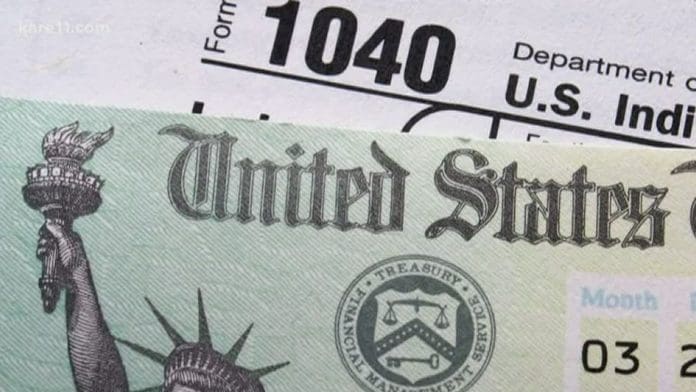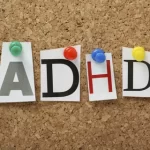Millions of low and moderate-income Americans received aid through the 3 rounds of federal stimulus checks after the onset of the pandemic. As millions of Americans were suddenly left without a source of income, the federal administration moved in quickly and declared the first in a series of stimulus payments and other relief measures that helped citizens through the economic downturn fuelled by the pandemic.
The first of the economic measures was the distribution of the first stimulus payment under the CARES Act. It sent a stimulus check of $1,200 in March 2020, followed by another $600 relief payment in December 2020.
The biggest measure was the third stimulus check, or the Economic Impact Payment, signed by President Biden which was worth $1,400. The American Rescue Plan Act, which included the third stimulus check, also provided many more relief measures to support businesses, states, cities, and local bodies.
The three of them put together along with a slew of measures is massively bigger than anything that the government had ever done. With each stimulus check sent out, the IRS and the Treasury became more efficient at sending out the money.
While it took a few weeks for the IRS to send 89.5M payments under the CARES Act in March 2020, they send 90M payments within five days of the American Rescue Plan Act being signed by President Biden on March 11, 2021. The IRS achieved a Herculean task of sending out stimulus checks under quite difficult circumstances.
Stimulus Checks Went Out To People Unaffected By The Pandemic
But despite the efficiency of the distribution process, there was the problem of money going to people who did not deserve it in the first place. Many well-off taxpayers who were completely unaffected by the pandemic also received the money. The need for speed led to inaccuracy in the distribution of the stimulus checks.
The nature of the pandemic forced lawmakers to send out money faster and that led to several inaccuracies. Around 90% of taxpayers enjoyed the benefits of successive stimulus checks even though a substantial percentage of them did not suffer from loss of income despite the pandemic and the economic downturn.
There were attempts made during the third stimulus check to limit the payments to families which truly deserved the payments. And with each successive stimulus check, there was a drop in the number of people who spent them.
While the initial stimulus check was used on household necessities, the later payments, especially the economic impact payment of $1,400, were typically used to pay off debts or went towards savings.
Issue Of Missing Stimulus Checks
A nagging issue that affected all the three stimulus checks and also the enhanced child tax credit stimulus check was reaching out to one section of the population who truly deserved the payments, the non-filers. This section of the population earned too little to require submitted income tax returns.
An executive order was issued by President Biden in his very first month to renew administrative efforts to reach out to an estimated 8 M people who had not received a single stimulus payment.
Additional outreach helped the federal administration get in touch with this segment of the population, but many people missed out on the relief measures.
Officials admit that it was really difficult to contact and get money into the hand of the most vulnerable sections of society, people without a bank account and who had no official records to rely on. This was particularly true of rural areas and within Black and Latino communities.
The Third Stimulus Check May Have Been Unnecessary Say Some Analysts
There were many reasons for this gap in payments. Many people hesitated to apply for payments. While some were put off by the complexity of the process, others were wary of being associated with the IRS, fearing future run-ins with tax authorities.
The last stimulus check, the third, was forced on President Biden as it was part of a promise of a $2,000 stimulus check promised by both political camps. But then President Trump was forced to pare the second stimulus check down to $600.
Newly elected President, Joe Biden had no choice but to declare a stimulus check of at least the balance amount of $1,400 to round off the amount promised by both him and Trump during the presidential election campaign.
The third stimulus check went out just as the economy was about to open up and take off. In hindsight, the third check was unnecessary, or at least it should have been smaller. But at that time it felt like a reasonable call by the federal administration.
High Inflation Figures Lead To Question On The Stimulus Checks
As inflation figures in the US touch record figures, some have said that the stimulus checks were solely responsible for the problem. With inflation reaching a 4-decade high figure, many economists argue that the overall size of the relief was to blame. This is especially true when one considers the total amount that has reached families through the 3 stimulus checks, with some families getting over $10,000.
But the federal administration argues that the surge in prices was affected by too much money chasing too few goods. And the scarcity was caused by supply and production issues. And also the war in Europe.
Factory workers stayed out of work across the world for months together and things did not improve even after the economy opened as many people were too terrified to venture out, especially as they had money in hand.
The war in Europe was one of the main reasons for the rise in the price of Gasoline as Russia is the third-biggest supplier in the world and sanctions imposed on the nation backfired on the western economies.
Most experts agree that while it was a combination of factors, the stimulus checks were responsible for a rise of at least 3 percentage points in the inflation rate.
States Move In With Inflation Relief Measures
Around a dozen states are sending direct payments to their residents. Even as the nation grapples with record inflation rates, the highest in 4 decades, many states are examining ways to help out their residents through various economic support measures.
The states have pitched in with a variety of measures including direct stimulus checks through transfers or paper checks, tax rebates, gas and transit cards, and sales tax waivers on gasoline and other essential goods.
While Maine and New Mexico have already legislated on the issue and sent stimulus checks to their residents, California is the latest to declare a $17B inflation relief package. This measure will give a stimulus check that will be worth up to $1,050 for families. It could be in the form of both direct bank transfers and debit cards.
The funds are coming from the huge budget surplus of $97B that the state enjoys.






